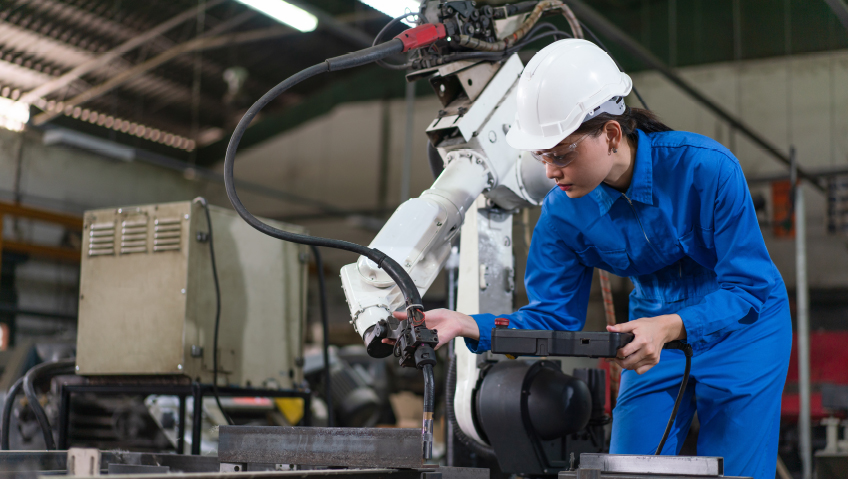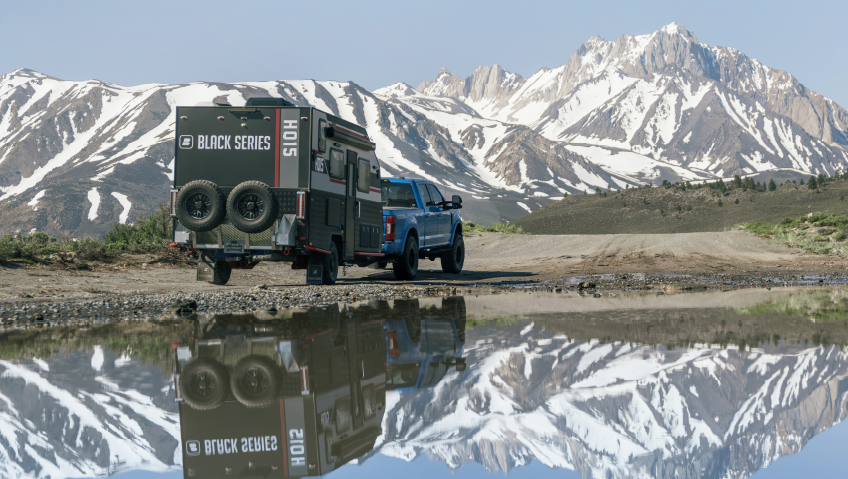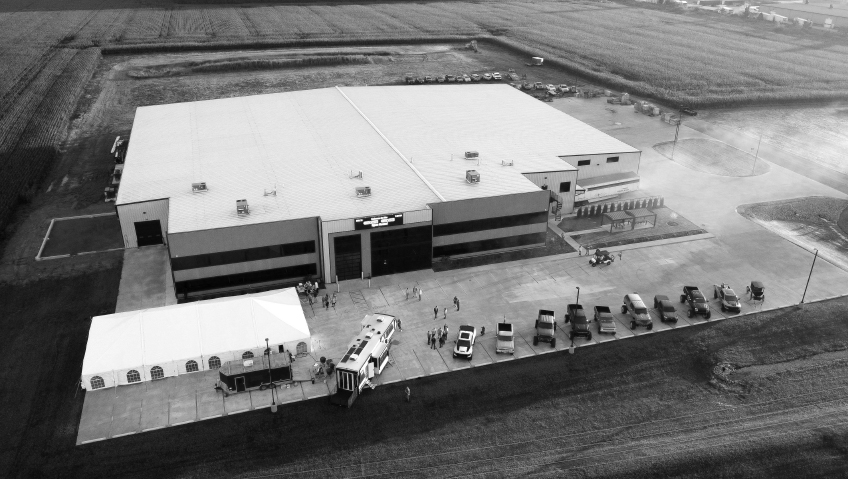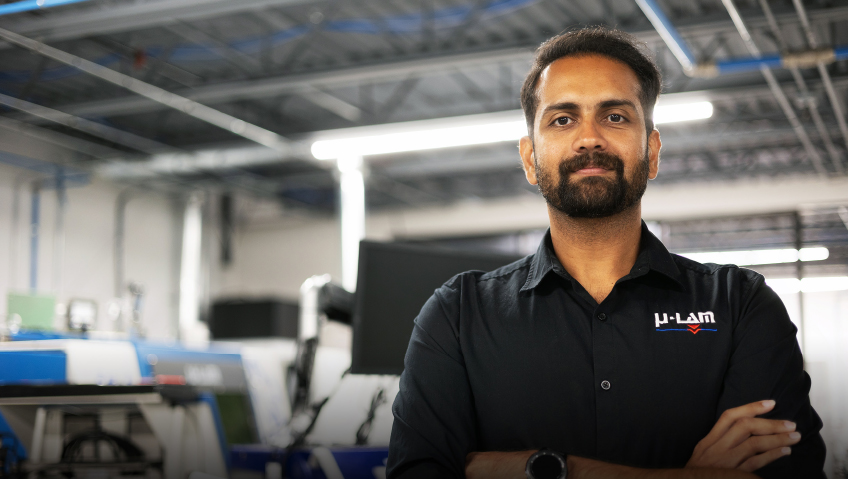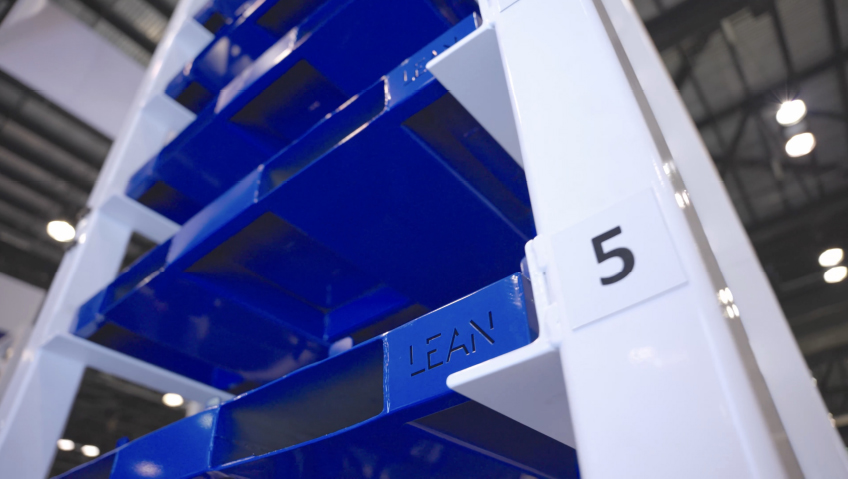Here at Manufacturing in Focus, we enjoy sharing stories of entrepreneurial success, of manufacturing businesses that literally started on “a wing and a prayer,” and, by leveraging skills, connections, and technology, grew to take their place on the national and international stages.
In our November 2024 issue, we shared the story of Franchino Mold & Engineering of Lansing, Michigan, which got its humble start in 1955 in a 20’ x 20’ garage owned by Richard Franchino. Today it’s an industry leader in the custom design and engineering of medium to large die cast dies and thermoplastic injection molds, serving manufacturing customers across the nation and around the globe in aerospace, construction, consumer goods, and other sectors.
A month earlier, in our October 2024 issue, we told you about Crystal Sensations of Markham, Ontario, whose beginnings go back to 1990 when company founder and owner Miles Bocknek, working out of his home, began marketing coffee table books to corporate clients in the Greater Toronto Area. Today, the company is a design studio and manufacturer specializing in corporate giftware and awards, using sophisticated subsurface 3D laser engraving technology to serve over 5,000 clients.
These stories and others like them are inspirational but raise the question: can their successes be replicated in the 21st century, which saw a recession in 2008, two years of lockdowns, supply chain interruptions, and massive inflation?
We don’t think it is by any means easy to do, but we do wish to highlight Bathurst, New Brunswick’s ThermalWood Canada, featured in our December 2024 issue, which did beat the odds when it opened in 2008, “when there couldn’t have been a worse time to start a business,” as founder and co-owner Robert Lennon told us.
The business model Lennon and his brother-in-law, Pierre Friolet, had developed over three years involved providing a service for wood product manufacturers by thermally treating their hardwood lumber to create a stable, mold- and insect-resistant product suitable for external use. But during the recession, North American manufacturers were not interested, which forced ThermalWood to change its model, and both treat the wood and manufacture product—such as decking and siding—as well as shift the sales target to Europe.
Fast forward to 2020, when Lennon heard about the difficulty luthiers were experiencing in sourcing good quality black ebony wood prized for guitar necks. ThermalWood took advantage of the slowdown created by the pandemic to develop an alternative for ebony using maple, which, under the name Obsidian Ebony, has been industry-tested, gained favourable reviews, and opened a niche market in the music industry.
The outlook for small manufacturing entrepreneurs in 2025 and beyond
It could be said that for small manufacturing entrepreneurs these are “the best of times and the worst of times,” with failure rates up to 51 percent within the first five years of operation in both Canada and the U.S.
Both countries are dealing with sky-high inflation, tariffs and possible retaliatory tariffs, and supply chain interruptions. Added to that volatile mix are ongoing conflicts impacting the global economy, a rapidly changing climate, and the need to meet carbon emission reduction targets as per international agreements. One of those factors alone could be enough to shut down a business.
Yet there are lessons to be learned from the 49 percent who do succeed which are both inspirational and instructional, and as important now as they were in the past—lessons about controlled growth, market research, and a nimble response to changing market conditions.
Richard Franchino, for example, allowed his business to grow slowly, developing a solid local client base before expanding. Miles Bocknek knew he had a winning product as he had distributed the crystal awards to corporate clients who loved them but found shipping costs prohibitive. That experience gave him the confidence to invest his own money to acquire the technology to manufacture them. For three years, while Lennon developed ThermalWood Canada, he continued working in his previous job, not taking a salary from the new company, and when faced with roadblocks, he pivoted.
Not only is it possible for small manufacturing entrepreneurs to succeed, but given the geopolitical conditions North Americans face in the second quarter of the 21st century, it is imperative for our nations that we become self-sufficient. At the same time, we need solutions to solve the climate crisis, and these two needs combined—self-sufficiency and environmental solutions—represent opportunities in the innovation economy.
But while entrepreneurs look to help solve these issues, who is helping them get started?
Where solutions incubate and hatch
According to the Business Development Bank of Canada, incubators play an important role and can support start-ups in various stages of development. With support through their first two years, start-ups have a better than average five-year success rate when they do fly solo.
Incubators often operate in cutting-edge, advanced technology sectors and may share space and logistical and technical resources, which enable fledgling companies to develop and test their offerings at a lower cost before starting production. There are also local economic development incubators that support a wider variety of businesses, since their focus is on job creation and regional revitalization.
We feature one such incubator (see Entering a New Energy Era) in our February 2025 issue of Business in Focus, and found that Gord More, Executive Director of the Southeast Techhub (SETH) in Estevan, Saskatchewan so insightful we wanted to hear more from him.
“If you look at our world—politically, socially, economically—you’ll see it is driven by innovation. If you look at ancient cultures, the Greeks and the Romans, you’ll see they too had innovative ideas and ways of doing things, and then they didn’t, and that’s when they stopped being leaders,” More says.
“To be successful in the current market, you need to be on top of innovation, but big corporations are slow and find it difficult to make changes. They are controlled by regulations, liabilities, and earning a profit for shareholders, so they are not willing to take a risk. This is why we need the innovators and the disruptors to be backed up and supported.”
Southeast Techhub (SETH) and the Innovation Centre for Energy Development (ICED)
SETH, which opened in May 2022, was created by the City of Estevan, in southeast Saskatchewan, with support from the provincial and federal governments. It is a registered, incorporated, non-profit organization that acts as a collaboration hub with a mission to inspire and nurture the growth of innovative and technology-based companies in the region, which will eventually lead to the manufacture of small and large products.
Currently, it is functioning in two ways, serving its biggest client, Estevan itself, with a major project, while also working with 20 small manufacturing entrepreneurs who are in varying stages of development, and who More has taken through a sequence of steps starting with an investigation to see if their project ideas would work in real-life situations.
He assists in developing a business plan, connects them with resources, explains what they need to know about patenting their idea as intellectual property, may refer them to the local college if there are skills they need, mentors them, and helps them understand financing.
Projects in advanced stages—with some even having a few customers—include a methane sensing drone, which is flying over oil fields in Saskatchewan and Alberta; a new type of water purification system, which tested successfully on the effluent from a meat packing plant and is now being built in Estevan, with several municipalities interested; and a new type of wind turbine. The latter’s prototype is complete, government funding is in place, and it is now in the applied research stage at a university which is building a life-size prototype to test.
Another project involves a software system currently under development by a Métis artist assisted by students in a computer science projects training program at Southeast College. The system will assist in the application of traditional beadwork patterns, which the artist learned from Elders and which can be used in the manufacture of various items. “I have been helping her to find a market and she recently did a presentation with some government and businesspeople in Saskatoon, and she was so happy,” says More.
Meanwhile, the community is using the tech incubator to find a solution to a serious problem it will face in five years, when the coal mines, Estevan’s economic driver for 150 years, will be forced to end production unless a use for coal other than as a fossil fuel can be found. As More explains, “Our coal is different from that found in other parts of the country. It is prehistoric peat that has been barely fossilized and still has its original organic structure. Under a microscope it has the same structure as graphite.”
Graphite is widely used in industrial lubricants, in the core of nuclear reactors, and in the rods to control the reaction. This is significant as there is great interest in the manufacture of small modular reactors (SMRs) for power generation, but there are hurdles to their manufacture, with China controlling 77 percent of the world’s graphite. Currently, SETH is working on a project to convert the coal to graphite with applied researchers at The George Washington University, and on another project with the University of Chicago to convert coal to green hydrogen which could then be used for powering agricultural equipment or drones.
Last year, SETH partnered with Southeast College’s Centre of Sustainable Innovation to create the Innovation Centre for Energy Development (ICED), “an ecosystem where applied research or product development projects could be completed.” This in turn will lead to projects being commercialized and manufactured, creating new industries and new opportunities for small entrepreneurs.
Included in the plans for a fully operational ICED are a hydrogen hub, a solar-powered data centre, an organic chemistry lab, and a microgrid that would allow energy projects to tie into other projects to mimic a real-world environment, in a climate that fluctuates from +40° C to -40° C. “But we need private investors to bring these projects to fruition,” says More. “We are receiving government funding, but private investors bring understanding and knowledge of the markets they work in, and we need that to make these projects successful.”
The rural mindset—innovation connection
People may think that all the disruption is taking place in large centres, but that is not the case. More points to a study conducted at Stanford University using AI to reinterpret congressional floor debates, major corporations’ quarterly reports, and sales reports over the last 50 years, which asked, ‘when was the first time this idea was shown; where did those ideas come from?’ “This showed that innovation doesn’t happen in the big urban areas and instead happens with the outsiders, the disruptors, with us on the outside, as we have to be innovative to survive.”
He describes the rural mindset—how a farmer, when faced with a malfunctioning piece of equipment at harvest time, will improvise a way to repair it rather than sacrifice a day’s work by taking it to the nearest centre hours away. Dr. Eric Grimson, More says, who hails from Estevan and is now a senior officer and faculty member at the Massachusetts Institute of Technology and a recent guest speaker at a SETH event, “told us that if he had to choose between two students, one from an urban centre whose parents both had PhDs and another with the same test scores from a rural area, he would take the rural student. That kid grew up with challenges and is able to disrupt,” More shares, paraphrasing Dr. Grimson. “When you disrupt, people get mad at you, and you have to be willing to get smacked down and get back up when you fail or when what you created doesn’t work, and try again. That doesn’t always exist in the city, but that is everyday life in rural areas. It is how you survive,” he says.
“I think if we can get rural tech hubs and incubators going across North America, supporting small manufacturing entrepreneurs, it would really drive our economy forward.”


